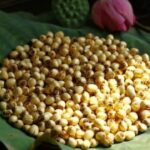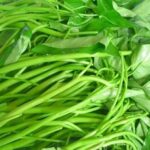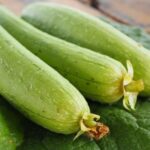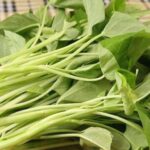Freezing can help extend the shelf life of avocados, but it may result in a gradual loss of vitamins over time. It can also affect their color and texture. Here are some tips on how to freeze avocados while retaining their flavor and maximizing nutrient retention.

What You Need to Know About Freezing Avocados
Avocado Nutrition
Freezing itself does not significantly affect the calorie, fiber, or mineral content of foods, but it can lead to a reduction in water-soluble vitamins like vitamin C. Avocados are rich in folate and vitamin B6. They also contain vitamin C.
While there are no specific studies analyzing nutrient loss in frozen avocados, some degradation over time, especially during prolonged storage, should be expected.
Avocado Structure
Freezing avocados can alter their texture. When frozen, the water expands and disrupts the fruit’s structure, a common effect observed in other frozen products. This may result in a loss of creaminess.
Upon thawing, avocados can become slimy, watery, and mushy. While you might not want to eat them plain, you can overcome this issue by blending or mashing the avocados to make guacamole, salad dressings, or dips.

Color
Avocados turn brown when exposed to oxygen in the air. During freezing and thawing, they are typically puréed, sliced, or halved, increasing their surface area and exposure to air. Thawed avocados can quickly brown, so proper handling and storage are crucial.
While browning is natural and does not affect the flavor, some may find it unappetizing. To minimize browning, you can brush the avocado flesh with lemon juice before freezing.
Additionally, ensure that the avocados are tightly sealed. Improper protection can lead to freezer burn, resulting in discoloration and dryness.
Flavor
While freezing itself does not significantly impact the flavor, various preparation methods can influence it.
If you use lemon juice to prevent browning, there might be a subtle change in taste. However, this will likely go unnoticed if you mix the avocado into dips like guacamole.
Commercially frozen avocado products may contain additives and other ingredients, so check the labels if you have concerns about flavor.

How to Prevent Discoloration When Freezing Avocados
Whole frozen avocados tend to brown and become very soft upon thawing. Therefore, it is best to slice, mash, or purée them before freezing.
Freezing Halves or Slices
Start by halving ripe avocados, removing the pits, and peeling the fruit. Optionally, you can cut them into smaller pieces. Brush or spray the peeled avocado flesh with lemon juice to help prevent discoloration, then wrap it in plastic wrap or place it in a resealable bag. Alternatively, you can use a vacuum sealer if you have one.
It is essential to minimize air contact with the fruit’s flesh to prevent browning and freezer burn.
Label and date the avocados if desired, then freeze them at 0°F (-18°C).
Freezing Puréed or Blended Avocado
You can also freeze puréed or blended avocado—or even homemade guacamole.
After peeling and pitting the avocados, purée or mash them by hand or using a food processor.
If making guacamole, add lemon or lime juice and any desired seasonings—but avoid adding ingredients like tomatoes or onions at this stage, as they tend to release water during thawing.
Transfer the purée into airtight containers, ice cube trays, or resealable bags. Squeeze out as much air as possible, either manually or using a vacuum sealer. Label and date the containers or bags, then freeze at 0°F (-18°C).
How to Thaw and Use Frozen Avocados
When you’re ready to use your frozen avocados, take them out of the freezer and thaw them in the refrigerator or at room temperature. Thawing typically takes about an hour at room temperature.
Thawed avocados are best suited for making salad dressings, smoothies, and dishes like guacamole, dips, and spreads.
While many people may find the texture and flavor changes unappealing for plain avocado consumption or salad topping, you can certainly do so if desired.
Seasonings and additional ingredients can help mask the mushiness and other changes resulting from freezing.
Freezing avocados can help reduce food waste, and you can enjoy them all year round. While most nutrients are preserved during freezing, the fruit’s texture tends to soften, and it may brown during storage or thawing.
Frozen avocados are best enjoyed when incorporated into dishes like guacamole, dips, and smoothies.
The Secret to Stir-Frying Water Spinach: Keeping it Green and Crisp, Even When Served Cold
“Master the art of stir-frying water spinach to perfection with these expert tips. Discover the secrets to creating a dish that rivals those crafted by restaurant and pub chefs. Learn how to transform this humble vegetable into a mouthwatering delight, with crisp, vibrant greens that are bursting with flavor.”
The Ultimate Guide to Chopping Banana Flowers: Keep Them White and Crisp for Longer
Banana blossom is a versatile ingredient that can be used in a variety of delicious dishes. It can be shredded and used in a nam sod, a traditional Thai salad, or tossed with your favorite greens for a refreshing twist. Simmer it in a hearty soup, such as bun rieu or bun bo, or stir-fry it for a quick and tasty meal. It’s also excellent in curries and stir-fries, adding a unique flavor and texture.






































